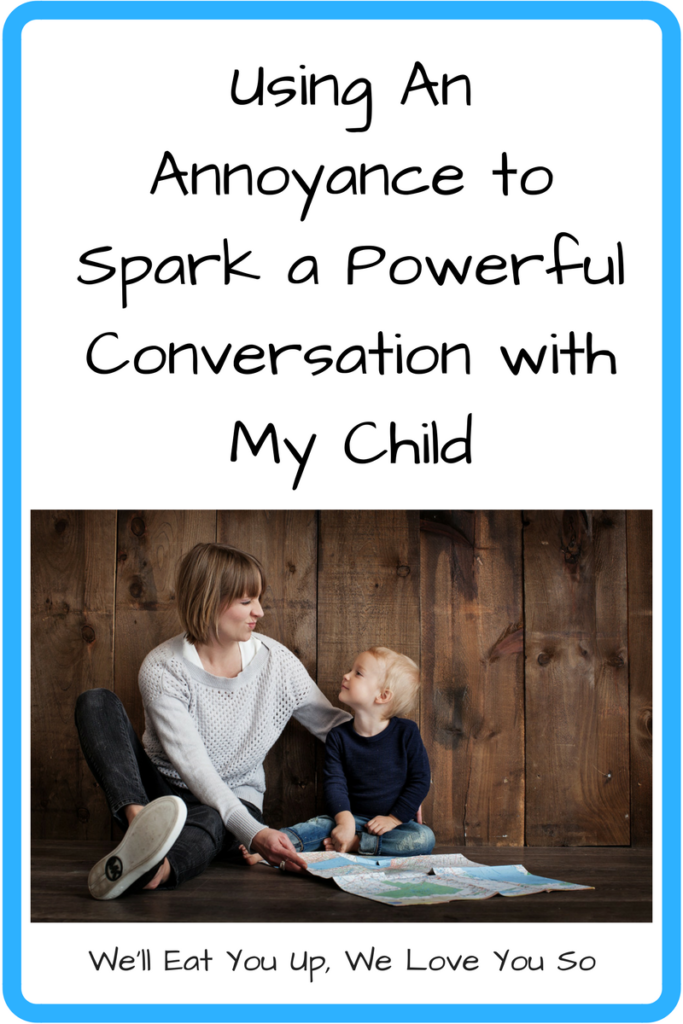This singing Christmas tree is the bane of our holiday existence. But good things – even deep insights – can come from the most annoying of situations.
While some people can’t stand non-stop carols or mall parking lots during the holiday season, this tree bugs us the entire month of December. My mother-in-law bought it for my older son (nicknamed Sprout) a few years ago. Since then, he has played it as many times as we would possibly let him. First thing in the morning. Last thing before bedtime. Random times during the day until my husband finally gets sick of it and puts it away. While the song is cute the first time, it’s grating the 60th time. But I just don’t have the heart to get rid of it.
As per tradition, we got it out of the basement on December 1.
As we listened to it that afternoon for the fifth time, I commented that I always thought of the tree as a girl because the voice singing the song sounds female. Sprout said, “I think it’s a boy because he has a bow-tie,” pointing to the red bow. Then he amended his comment. “Actually, I think it’s half boy, half-girl because it has a bow tie and a girl’s voice.”
Wanting to expand the conversation, I clarified, “Well, it could be a girl who wears bow ties. Or a boy with a high voice. Or be half-boy and half-girl.”
As someone who knows folks who are trans and non-binary, I found his “half-girl, half-boy” comment fascinating and encouraging. On one hand, I knew he doesn’t put a lot of emphasis on gender and traditional roles the way some other kids his age do. In addition, he’s familiar with same-sex couples; twins in his preschool class have two dads.
But while we’ve hinted that there’s more than the gender binary, we’ve never explicitly stated it. The fact that he sees those shades of gray gives me hope that our lessons about diversity of all kinds are sinking in.
At the same time, this odd conversation gave an opportunity to plumb some gender stereotypes. After all, there’s no rule that says girls can’t wear bow ties and boys always have low voices. I often find starting these conversations awkward, but this one was a natural fit. By discussing how the tree may have been different from our initial impressions, we both could identify our own assumptions and where they could be wrong. While this was in the context of gender, being able to recognize when your assumptions are wrong is such an important part of working towards justice for everyone.
After that conversation, I’m so glad I listened to my son talk about the tree despite having to listen to “Rock Around the Christmas Tree” for the bazillionth time. It just goes to show that anything can spark a deep conversation if you follow your kid’s lead!
For more ways we’re teaching our kids to bust gender stereotypes, check out Seven Ways I’m Teaching My Young Sons to Be Feminists. Be sure to follow us on Facebook!
